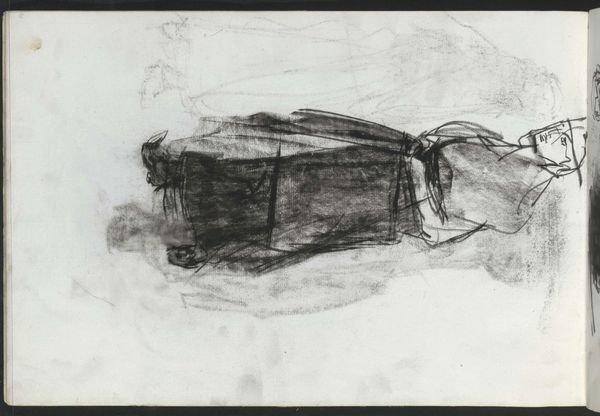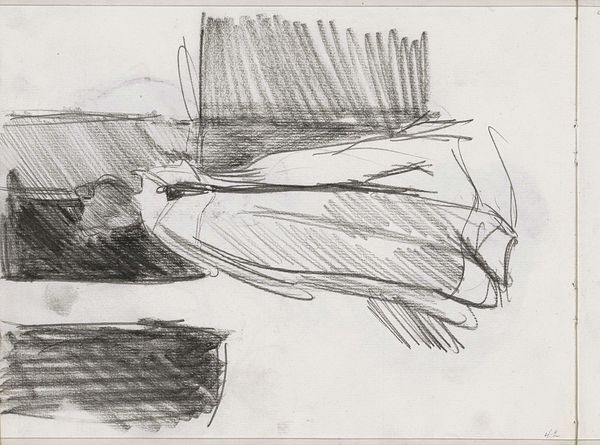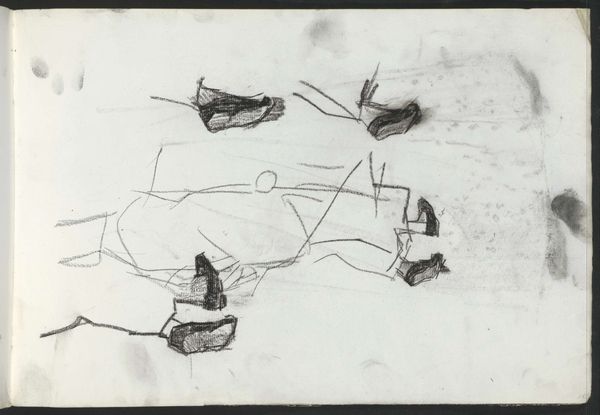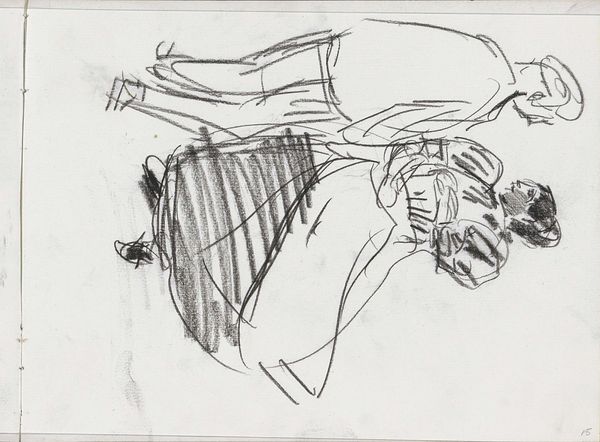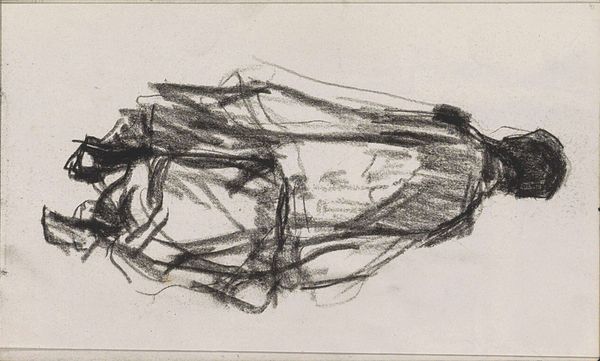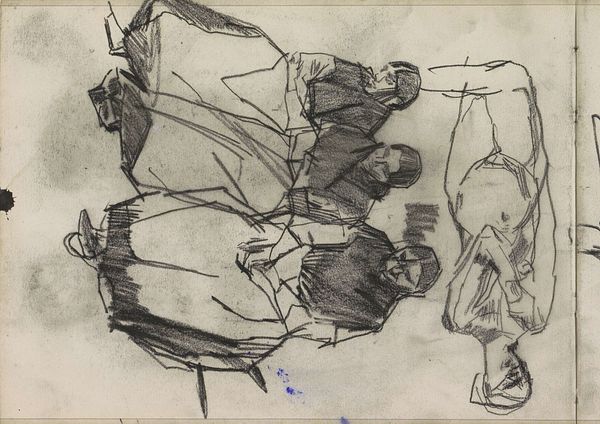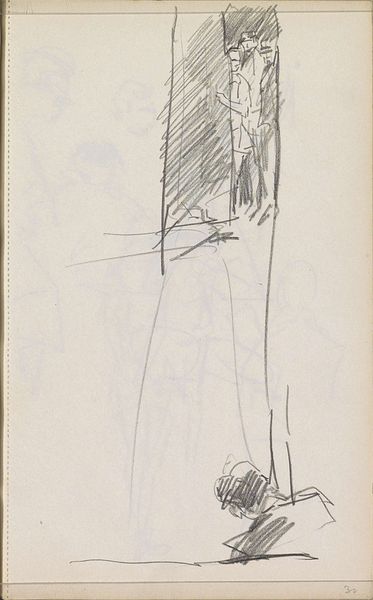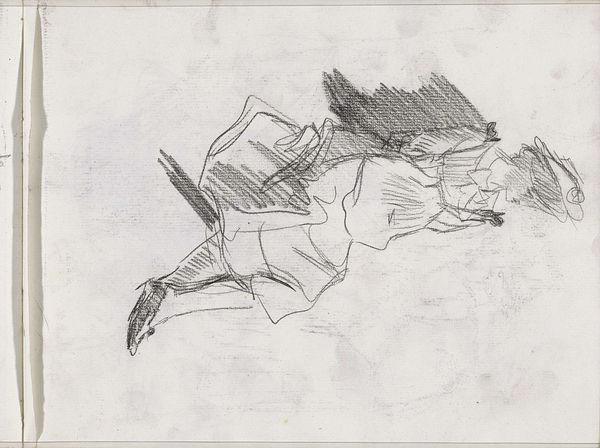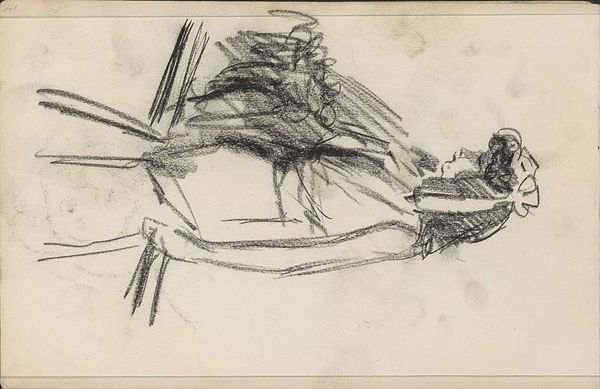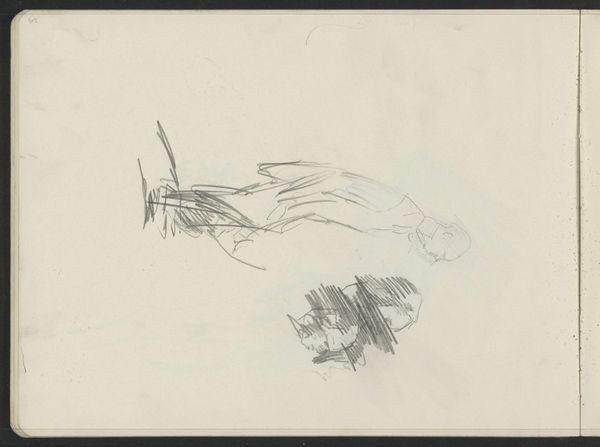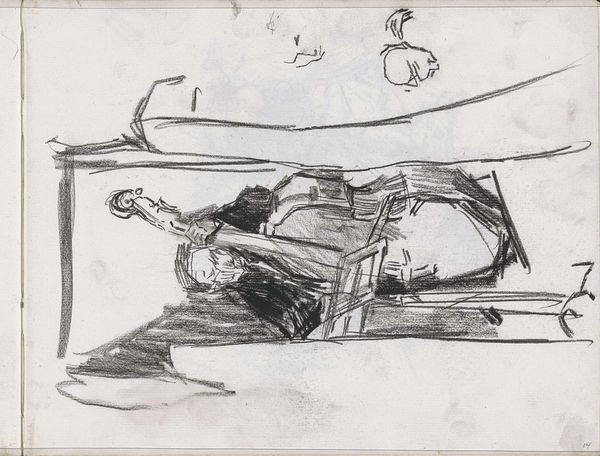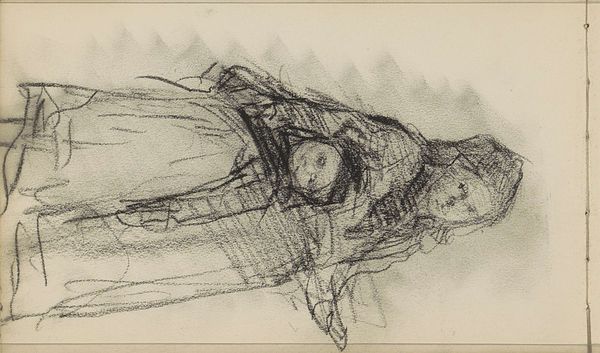
Copyright: Rijks Museum: Open Domain
Editor: Here we have Isaac Israels’ "Two Studies of a Woman Looking Down," a graphite drawing made sometime between 1886 and 1934. It's quick and a bit brooding; what stands out to me is the anonymity of the figure. What do you see in this piece? Curator: I see a work that subtly captures the intersection of gender and class in the late 19th and early 20th centuries. Israels was known for depicting working-class women. The downward gaze, repeated here, avoids direct engagement, which could be interpreted as a visual marker of social distance or even a sense of resignation. Does it make you think about power dynamics? Editor: It does, now that you mention it. There's a vulnerability to it, almost like she's trying to disappear. The sketches feel very raw and immediate, but distanced at the same time. Curator: Exactly. Israels was working during a period of significant social upheaval and debate about women’s roles. Could this posture be a commentary on the limited opportunities afforded to women, their lack of agency in shaping their own narratives? How do you see this in relation to Impressionism as a whole? Editor: Impressionism was about capturing fleeting moments, and maybe this drawing catches a fleeting moment of societal constraint. I never considered it in this light. Curator: Considering Israels’ social circle, do you think that he was aware of those constraints or, at least, engaging in discourse surrounding the lives of those different from his? Editor: That’s a good point. Thinking about the social context helps to understand the drawing in a different light than just as a sketch. Thanks for your perspective! Curator: My pleasure! Considering the broader societal framework can open a wealth of possibilities when examining a work of art.
Comments
No comments
Be the first to comment and join the conversation on the ultimate creative platform.
